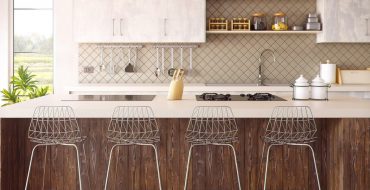
CHOOSING A LOCATION
The first thing when scouting for a new home is choosing a location. Whether you plan to buy a plot of land and have a custom architect design and build for you, or if you plan to go with one of the many neighborhoods built with existing plans by Pulte, DR Horton, or others, the first step is to find a home within the boundaries of your desired location.
- Good School Districts
- Easy Freeway Access
- Many local shops, restaurants, and attractions
- Is a Basement Lot
- Neighborhood Amenity – Swimming Pool
- Neighborhood Amenity – Tennis
- Neighborhood Amenity – Club House
- Neighborhood Amenity – Fitness / Gym
- Work Location
- Good Cell Coverage
- Good Sun Cover
Read more about each of these items for choosing a location.
CHOOSING A FLOOR PLAN
Many builders will offer a range of pre-designed plans to choose from. Each plan may also have a number of elevations (front view) to select from. Sometimes you get lucky and there are model homes you can walk through that give you an idea of how the floor plan will look once built.
These are the things to look for when choosing a floor plan that suits you:
- Open Plan Living
- Bedroom on Main
- Number of Bedrooms and Bathrooms
- Basement Layout
- Elevation
- Ceiling Height
- Feng Shui / Vastu Shashtra
CHOOSING YOUR UPGRADES
The builder will often have a plethora of upgrades that are possible. Some of the options will be ridiculously priced, so do your research before assuming the builder will have the best deal. Other upgrade options may be more structural in nature. These are the ones you should prioritize first as they will be more difficult or expensive to do later (tearing down walls etc). Some upgrades give you more bang for your buck and just elevates your house to new levels.
These are the upgrades I recommend people do if they are able to:
- Baseboards and Crown
- Carpet Padding
- Ceiling Fan Mounts
- Flat Panel TV Mount
- Kitchen Countertops
- Rocker Switches
Be sure to check out my post on top 10 builder upgrades you should do where I go into upgrades you should focus on and upgrades to avoid.
MODIFICATION REQUESTS
Once you have selected a location, floor plan, and your standard upgrades, the next step will likely be to sign a contract with the builder. Any modifications from the standard offering you want the builder to make will need to be listed in the contract otherwise they won’t do it (don’t rely on verbal arrangements).
Here are some of the other builder modifications that you should ask the builder:
- Buried Conduit under Driveways and Footpaths
- Hidden Conduits for TV cables
- Hidden Conduits from Attic to Basement
- Wired Ethernet
- Ceiling Mounted Wireless Access Points
- Infinity Hot Water Line
- Outlets above your Kitchen Cabinets
- Strategically placed floor outlets
- Backsplash Options
- Electric Car Charging Outlets
DIY HOME PROJECTS
There will be upgrades that the builder will offer which you can probably DIY later. With some planning, you may have the builder do some work to enable better integration of your DIY. Although this website has is focused on DIY Home Improvements, here are some options which I found are much cheaper (or better) to do yourself after you move in, compared to the upgrade options provided by the builder:
- DIY Install Under Cabinet Lighting
- Install your own Upgraded Light Fixtures and Fans
- Install Outdoor Landscape Lighting
- Epoxy your Garage Floor
- DIY Outlet in Drawers
- Install USB Outlets
- Install your own built in shelving
SMART HOME TECHNOLOGY
Once your home is built, you may want to incorporate the following smart home technologies into your home. Making your home connected gives you more convenience to make your home more comfortable, while also giving you the security of being able to see and control aspects of your home while you are away. These often don’t rely on structural changes from the builder, and can be integrated after you move in. Some builders offer smart home packages. It would be wise to evaluate what technology they offer, the eco system it falls under, and the price to install vs doing it yourself.
Automation will typically fall under 4 categories
- Apple (Siri/HomeKit)
- Google (Home/Assistant)
- Amazon (Alexa)
- All of the above
Once you have an idea what eco system(s) to focus on, start looking at smart home devices that meet your needs:
- Home Security Camera’s
- Connected Home Security Monitoring
- Connected Thermostats
- Connected Smart Lighting
- Connected Garage Door Opener
- Smart Locks
- Multi Room Connected Speakers
- Voice Assistants
- Alternatives to Cable (Antenna) – Free Over the Air TV
- Technology Closet
- Home Automation
Original Article: https://www.drawbuildplay.com/blog/50-awesome-hacks-for-building-a-new-home/